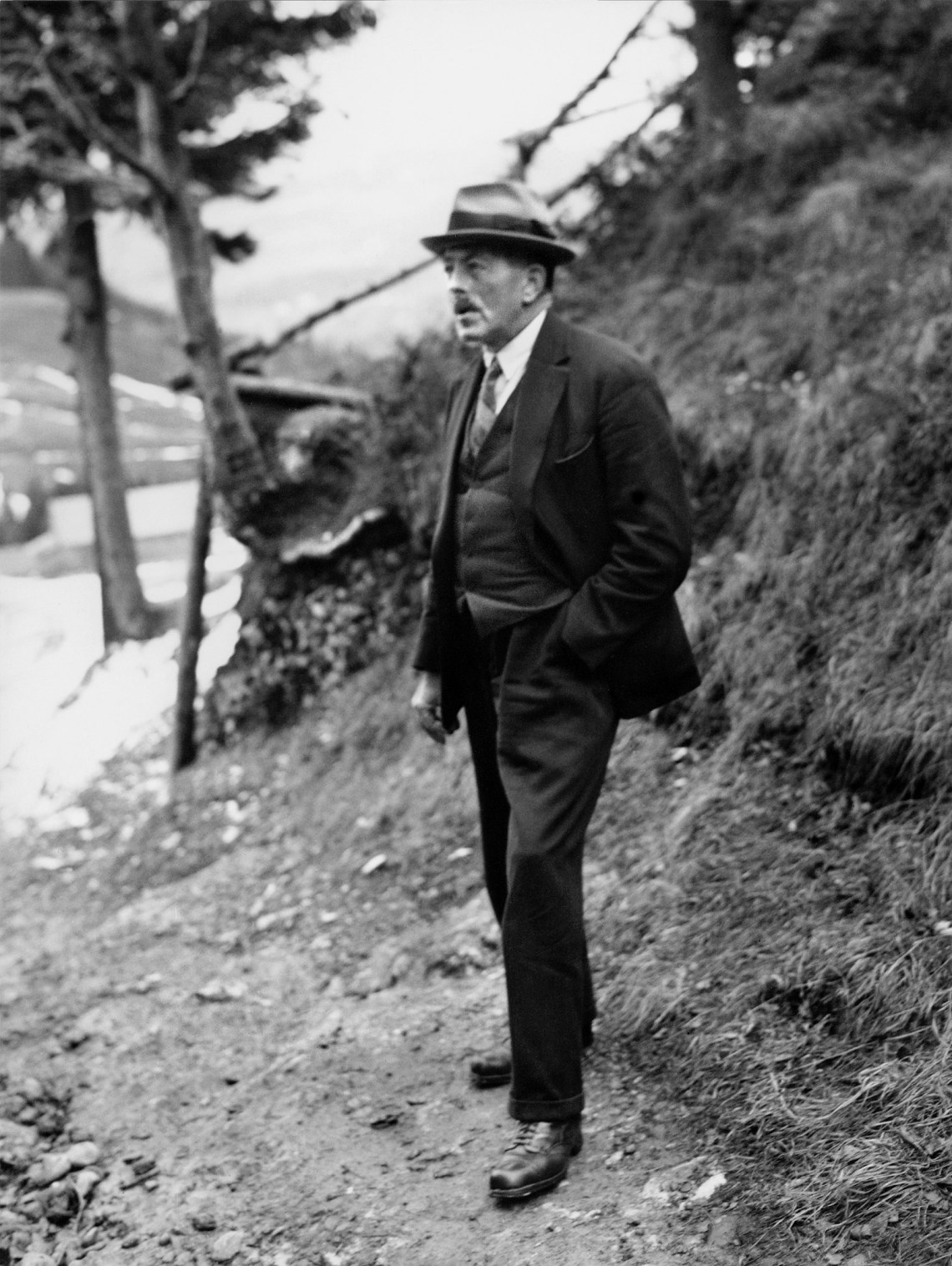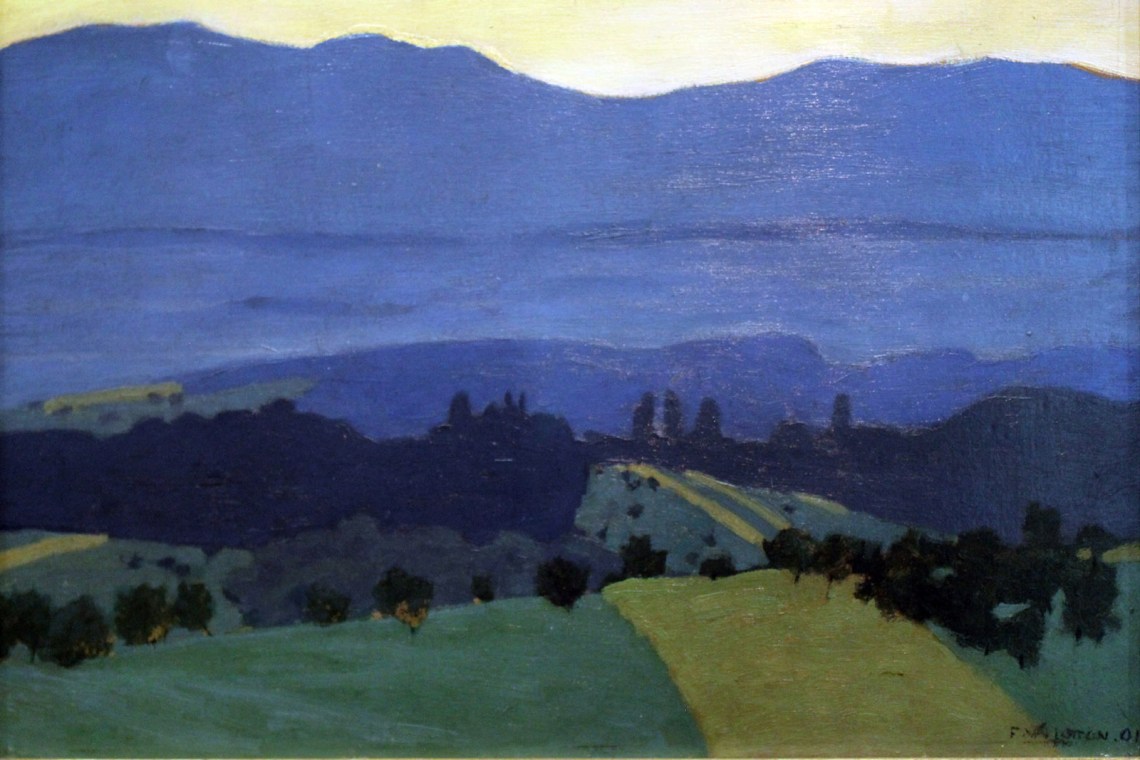Readers—fans, devotees—of Susan Bernofsky’s nonet of Robert Walser translations and cotranslations (from Masquerade in 1990 to Looking at Pictures in 2015) have been alerted for some years now to a biography in progress (“she is now at work on a biography”), and perhaps wondered whether they would ever see such a thing. I know I did. It’s self-evidently a good idea: an English life of the Swiss cult author, and, for the translator, a way of valorizing and preserving decades of unique, irreplaceable thought and attention, making visible an otherwise largely unilluminated service to an original. If a picture is worth a thousand words, how many translations does a biography weigh?
Well, here it is, I’m happy to say, an accurate, independent, and well-researched English life of the pauper, walker, novelist, and most heterogeneous of authors (I can think of no form he didn’t try his hand at, in his burbling tenacity and economically conditioned desperation: plays, poems, short stories, essays, and his most characteristic Prosastückli, or inimitably jaunty, whimsical, parodic short prose), also micrographer and asylum dweller; a life made by Bernofsky from Alps as much as archives—no sparing of shoe-leather here—and still without the prolixity that spoils so many biographies these days.
There are a few minor caveats: one might have wished for a book that didn’t refer to its subject as “Robert” throughout; a better title than the charmless and bossy Clairvoyant of the Small, which does not do for Hellseher im Kleinen, a Walser-derived phrase of W.G. Sebald’s. “Miniaturist and clairvoyant,” maybe. (One does and doesn’t want to make him sound twee.) Or else something entirely different. One can’t help feeling sorry for the word “small” here as an adjectival noun—it sounds so self-congratulatory. As an adjective, everywhere I can think of, it’s the guarantor of an outstanding title: Epitaph of a Small Winner, The God of Small Things, Small Things Like These.
Walser (1878–1956), the seventh of eight children of a shopkeeper in the Swiss town of Biel (toys, paper wares, household goods; later, when he’d fallen upon hard times, wine and olive oil), remained a son and brother all his life. It’s odd to read Bernofsky’s occasional passing references to “friends.” I think she’s being charitable, because I don’t know who they might be, beyond the much younger Carl Seelig, Walser’s subsequent biographer and literary executor, who, from the goodness of his heart and admiration of the writer Walser had been, took him out of his asylum on Sundays for huge walks and huge meals several times a year for twenty years, and left impressionistic transcriptions of the experience in his anxious, tender Walks with Walser.* But other than that? I really don’t know.
Whereas family stayed with Walser all his life: his father, whose business failed and who lived on; the mother who was committed (“gemütskrank,” says a Swiss biographer—perhaps “depressed”) and died when the boy was still in his teens; the one brother who sickened and died even before that; another who went mad; the one level-headed one who became a banker; the one who killed himself later; and Karl, the nearest to him in age, the successful—and wonderful—illustrator and set designer, to whom he was periodically closest, descending on him when he was in Stuttgart and Zurich, and with whom he lived on and off for most of the Berlin period (1905–1913).
Karl Walser—closest and then unexplainedly furthest away—and the two sisters, Lisa and Fanny, the former of whom he also lived with for a time when she was a schoolteacher in charge of the children of the staff in an asylum, and who in the end signed the committal papers on her brother in 1929. These, or a fair few of them, figure in Walser’s first novel, The Tanners (which Bernofsky translated), and in many of the stories and prose pieces, sometimes lightly disguised, sometimes not, sometimes somehow both at once. Family was sustenance and history and drama from which one was never released, and I sometimes wonder if Walser ever really understood anything other than his own dark, thin, bony clan.
Because outside of family, there were only patron–client relationships, which again appeared in various versions, though he saw through them all, and knew them for what they were. And they were nothing else. And that was the rest of life. It began with the schoolteachers. (Walser left school at fourteen.) He had a memory of having written nice essays, and thought he could carry on doing that, perhaps, later. A swiftly improvised list of themes might go something like this: walking, crime, work, looking, beauty, women, nature, sophistication/pretension, money, stories, art.
Advertisement
Then there were the employers who took on the young Walser as a commis, or clerk, setting him to write out columns of figures or addresses or letters; typewriters were not yet in general use. Much of his younger life, he was a temp. A temp of the most temporary kind. He even worked somewhere called the Copyists’ Office for the Unemployed in Zurich. He would save a little money, then quit to write poems or stories for a few weeks in a room or hut somewhere, until hunger reduced him. (Knut Hamsun’s pride was much more violent and straightforward than Walser’s, who could be cringing and abject, but he is surely a point of comparison.)
There were bankers, insurance people, people in shipping and art, people in elastics. He perplexed them or their underlings when he left their employment, taking with him his virtuoso penmanship in a variety of styles, often highly decorative. These styles are important, and Bernofsky writes about them perceptively and with compassion. Truly, Walser is a handwriter who dreamed of succeeding as an original author but was often forced to return to copy work and clerking.
Presentation mattered to him, perhaps excessively so, with pieces often centered on a page, and all of them of identical length. Later, in the 1920s, so much drama is implicit in his forsaking of his pen for stubs of often ill-sharpened pencil, and his cultivation of the so-called Bleistiftgebiet, the Pencil Zone or Pencil Terrain, and then in his subsequent adoption of microscript, where the choice of paper had an expressive pathos (invitations, rejections, honorarium slips) and the letters themselves were so tiny and stubby that for a long time they were taken to be code; they were finally deciphered by a pair of Swiss scholars, Bernhard Echte and Werner Morlang, working with industrial lenses called thread counters. Bernofsky notes: “It isn’t clear whether [Walser] himself could easily read a draft no longer fresh in his mind.” Was the microscript a form of burial or merely concealment?
Along the way we meet a few other human oddities, though they should still be classed as patrons, sometimes in the negative. The sofa-bound actor Josef Kainz, on whom the (very briefly) aspiring young performer calls, only to be waggled in the direction of the door by the maestro’s expressive foot. The professional inventor Carl Dubler, who later figures in Walser’s second novel, The Assistant (typically, minimally masked as Carl Tobler), in which the Walser character turns up as a mixture of secretary and au pair and gets to witness the inventor’s benignly megalomaniac enterprise hitting the rocks. Like a stowaway not on the Titanic but on a rowboat, or better, a raft.
But the most perfect embodiment of the patron was of course the publisher—people with control over money, paper and type, influence and timing, all at once. Not least because they cast their shadow over the whole of Walser’s existence. There was nothing of his that they couldn’t touch, the magazine editors who (to his way of thinking) picked him up and dropped him, the book publishers who offered so much less than a living wage and feared his unpredictable behavior at their soirees.
Small wonder, maybe, that Walser would sometimes aspire to the very purest version of alienated labor, and offer his services, apparently spontaneously, as a valet to this or that puzzled young writer, who might have supposed himself in the presence of some kind of equal; and, while in Berlin, in 1905, that he put himself through butler school, an episode briefly crowned, as it were, by his seeing actual service in a castle in Upper Silesia, as though pure function would anonymize him and anneal his humiliation. There were the NCOs in the Swiss army, in which, no surprise, Walser served his time willingly and enjoyably; he was law-abiding, had a strong sense of obedience, liked the outdoors, and, perhaps more than anything, liked having his food provided for him. Observers often commented on his health and strength.
His experience in the army, the extended periods when he was living with his brother and his sister, and in his two asylums, where he seems not to have been unhappy (knuckled down to gluing paper bags, and expressly asked for no preferential treatment), all suggest that given personal, financial, or some enlightened institutional support, he might have relished a more comfortable existence. As a matter of brute materialism, it was Walser’s misfortune and his heroism that he was obsessed with liberty, and paired this with a determination to support himself with his writing, which, after a while, and when he was no longer young, couldn’t support him.
Advertisement
The last and least of the patrons were the doctors, who in some galling instances also fancied themselves as writers and invited him to celebrate their success, or who understood writing (or as with Walser, no longer writing) as an infallible index of mental health—or illness, as the case might be. Walser’s famous, Bartleby-like remark that he was not there to write but to be mad is, Bernofsky says, apparently apocryphal, but like other aspects of his story, it has its own truth and can no longer be wished away.
A special subset of the patron is the landlady. The landlady in Walser is a sort of half-ironized goddess. Often a sex goddess. Just as Walser was for long periods a temp, so too he was a lodger when he wasn’t an inmate or a self-appointed visitor. He moved from city to city, from canton to canton, from street to street, with his one suitcase. Bernofsky has compiled a list of his addresses, scores of them, over four pages. He moved all the time, and when he was unhappy or ill at ease, he moved even more, as often as once a month. His landladies could be the recipients of his helpfulness, his solicitude, his eerie courtesy—a quality one could call, punningly, domestic terrorism. He was greatly interested in their laundry, their shoes, their feet.
Women could be counted on anyway to precipitate oddity in him. He makes the finical likes of Rilke and Kafka and Bruno Schulz seem like Blazes Boylan:
He wanted to kneel at her feet and tie her shoes, to be the handkerchief with which she blew her sweet little nose, and to lift her in his arms the next time they went for a hike together and came to a wall that required clambering over.
The incident that in 1929 finally precipitated the end of his liberty was when he proposed marriage to one landlady, and then to her sister, and then asked them, singly or together, to kill him with a large knife. He was hearing voices, he said, and was not unhappy to be committed.
The diagnosis was schizophrenia; Bernofsky has her doubts. In a book that seems to deepen and find itself as it goes along, her impressive last forty pages, “The Quiet Years: 1929–1956,” show her at her most resolutely delicate and forbearing:
There is no such thing as an uneventful year from the perspective of the person living it, even when the life in question appears from the outside relatively uniform. An entire book could be devoted to Robert Walser’s asylum years, which constitute a full third of his lifetime.
Bernofsky’s coauthor throughout the book is Doubt.
Or did he…. Little is known…. This fictional visit must have corresponded to a real-life one…. But he must have felt something…. We don’t know whether Robert made this trip…. Why they decided to part ways remains unclear…. The record of his life in Berlin thins out in 1908 and remains thin until his departure in 1913…. It’s unknown whether his insubordination had consequences…. He may have begun one or more novels during this period.
The rackety figure who wore garish clothes, behaved strangely in civilization (especially when he was in Berlin with his brother Karl, two Swiss rubes), the slightly wild character familiar from the same endlessly retailed anecdotes—smashing the Caruso records at the publisher Samuel Fischer’s, going up in a balloon, picking a fight with Frank Wedekind, walking all night before parking himself with near-strangers for weeks on end—is toned down, and almost tuned out.
Diagnostic or apodictic authorial phrases are far to seek. Bernofsky sees normality extending into the asylum years, rather than madness leeching into the earlier life. It is the Swiss biographer Robert Mächler who tells us that none of the Walser children had children themselves and who rejects out of hand the possibility that Walser was gay (the least of our worries), not Bernofsky. There is a delicacy in her approach, a will-to-kindness, an openness to other, previously rejected possibilities.
The result is that we get a book that is (by design) not a scintillating or hard-edged character study. That is not so much the “who” as the “how” or mainly the “how not” of Robert Walser—the movement of this eccentric Brownian particle through zones of poverty, independence, mannerliness, provocation, and a sort of manic positivity. It can feel as anonymous as following a cursor. The ups and (mostly) downs of Joe Freelance. In a 1995 monograph, the Swiss writer and dramatist Jürg Amann has it:
Indeed he has at his disposal both the sleekness of a future prospect and the self-neglect of a down-and-out. The one who stands here and opines must be seen as a highly individualized absence of individuality, is his proud and contemptuous characterization of himself.
“A highly individualized absence of individuality.” This is where we are. Walser is not ours to discover anyway. We, I think, sentimentalize him in, as Bernofsky has it, his “resistance to the pernicious commodification of contemporary life.” Far from following him (the horror, the horror!), it seems to me we have commodified him, converted him into a sort of cuddly mascot for us, in our Brooklyns and Hoxtons, a kind of alibi, a protesting exo-soul. “Why, anyway, should people think I’m well?” he wrote in the Stückli called “How Are You?” Exactly. His gifted contemporaries understood him better than we have any chance of doing, and saw him at his worth, too: the brilliant, saintly editors who “got” him and pushed him for as long as they reasonably could, many of their names still alive today (they are no villains)—Franz Blei, Bruno Cassirer, Ephraim Frisch, Siegfried Jacobsohn, Eduard Korrodi, Kurt Pinthus, Max Rychner—and the writers: Max Brod, Franz Kafka, Robert Musil, who quite rightly found his work “not a suitable foundation for a literary genre,” and Hermann Hesse, who wrote in a review that forty years ago stopped me in my tracks on an early boxed set of paperback Walser, “If he had one hundred thousand readers, the world would be a better place.” Well, now he probably does, and is it?
This Issue
February 10, 2022
Our Lady of Deadpan
Picasso’s Obsessions
In the Beforemath
-
*
Translated by Anne Posten (New Directions, 2017). ↩




